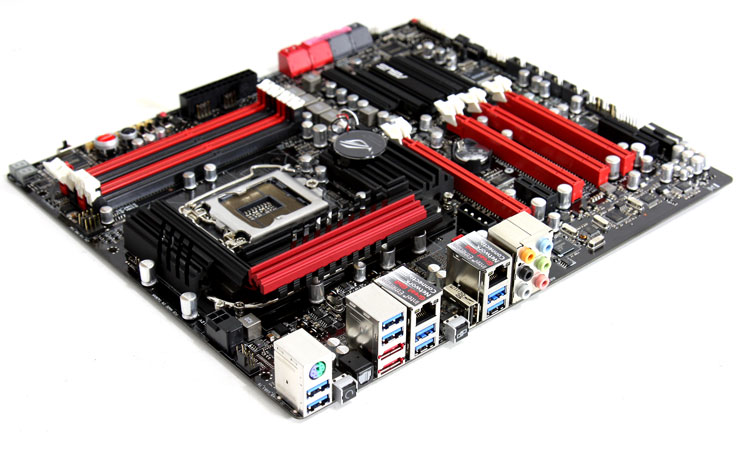Introduction

Asus Maximus IV Extreme-Z
Interestingly, there is currently a sudden surge of Z68 chipset LGA1155 motherboard releases. All of a sudden we see a plethora of Z68 boards, mostly high-end targeted Z68 motherboards arriving on the market.
We've already reviewed a good amount of them, but I find it somewhat interesting to see what was supposed to be a mainstream chipset ending up as high-end part. Last week, for example, we tested Gigabyte's G1.Sniper.2 Z68 motherboard that carries a price tag of 400 (!) EUR. This board is significantly cheaper, though still pricey at roughly 270 EUR.
ASUS completed its range of Z68 products as well, and the one that rules them all is probably the board tested today. The Republic of Gamers team applied their typical bunch of lovin' and sweetness to the motherboard, driving the feature count up and the tweaking performance to new heights.
Yes, the Maximus IV Extreme-Z Intel Z68 Motherboard arrived at the Guru3D test grounds all the way up in the highlands of Holland.
This motherboard packs no less than four PCI Express x16 slots, which are compatible with 3-way NVIDIA SLI and CrossFireX setups (x8, x16, x16), as well as a PCI-E x4 slot and a legacy 32-bit PCI slot. The extra PCI Express x16 lanes are provided by an Nvidia nF200 chip which is paired together with a PLX branded PCIe controller/switch.
Asus has placed eight SATA ports onto the board, four of which work at 6Gbps speeds. The processor power circuitry is managed by a Digi+ VRM which provides eight phases to the CPU and three phases to the motherboard's memory.
Being a ROG motherboard the Maximum IV Extreme-Z features intricate little extras like on-board Power, Reset and Clear CMOS buttons, a BIOS debug display, voltage measurement points and four DIP switches for disabling each of the four PCI-E x16 slots.
You can even provide extra power to the graphics cards through two MOLEX plugs. Typically you see two USB 3.0 connectors on a motherboard, ASUS figured... ahha rubbish, so that rear I/O panel is chucked full of eight USB 3.0 ports and two eSATA ports as well.
Weird to see is that ASUS left out monitor connectors, but we didn't expect you to use onboard graphics anyway. Anyway, that's enough chatter for this introduction, let's move onwards into the review as we've got a feisty little board on our hands.

